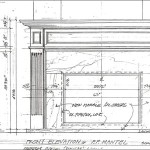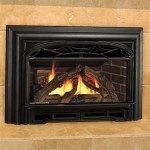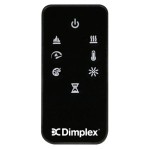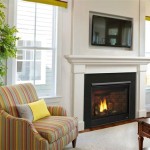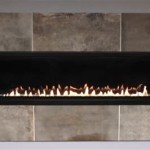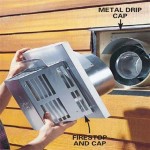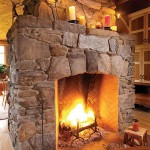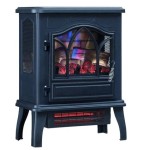How To Hang A Flat Screen TV Over a Fireplace
Mounting a flat-screen television above a fireplace offers a visually appealing and space-saving solution for many homes. However, this installation requires careful planning and execution to ensure the television's safety, functionality, and longevity. This article provides a detailed guide on how to hang a flat-screen television over a fireplace, outlining the necessary steps and critical considerations for a successful installation.
Assessing the Suitability of the Fireplace Location
Before proceeding with the installation, it is crucial to assess whether mounting a television above the fireplace is a suitable option. Several factors need careful consideration. The first is heat exposure. Fireplaces generate significant heat, which can damage the delicate electronic components within a television. Excessive heat can lead to decreased lifespan, screen discoloration, or even complete failure of the television. To mitigate this risk, consider the type of fireplace. Gas fireplaces generally produce less heat than wood-burning fireplaces. The distance between the fireplace and the mounting location is also critical. Sufficient clearance is needed to minimize heat exposure. A heat shield can be considered to deflect rising heat away from the television. Another point to consider is viewing angle. Mounting a television too high can result in neck strain and an uncomfortable viewing experience. The ideal viewing angle is with the viewer’s eyes level with the center of the screen when seated. Calculate the viewing distance and television size to determine the optimal mounting height. Lastly, consider the aesthetic impact of mounting the television above the fireplace. Assess whether the television’s size and design complement the fireplace and the surrounding décor. Achieving a balanced and visually pleasing aesthetic is important.
Gathering Necessary Tools and Materials
A successful television installation requires a specific set of tools and materials. Having these items prepared beforehand will streamline the process and minimize potential delays. A reliable stud finder is essential for locating wall studs behind the drywall. These studs provide the necessary structural support for the television mount. Ensure the stud finder is calibrated correctly for accurate readings. A drill with various drill bits is needed to create pilot holes for the mounting hardware and to potentially run wires through the wall. Select drill bits appropriate for the wall material (e.g., drywall, brick, concrete). A level is crucial for ensuring the television is mounted straight and level. Use a bubble level or a laser level for maximum accuracy. A measuring tape is needed to accurately measure distances, mark locations, and ensure proper alignment. A pencil is used to mark locations for drilling and mounting. A socket wrench or adjustable wrench is needed to tighten bolts and secure the mounting bracket. Various screwdrivers (Phillips head and flat head) are required for different types of screws. A wire fish or coat hanger can be used to pull cables through the wall, making cable management easier. Electrical tape is useful for securing and insulating wires. Safety glasses are vital for protecting your eyes from debris during drilling and installation. Gloves provide a better grip and protect your hands. A television mount compatible with the television's VESA (Video Electronics Standards Association) mounting pattern and weight capacity is essential. Carefully select a mount that meets the television's specifications. Lastly, consider cable management solutions such as cable ties, cable conduits, or wall plates to conceal and organize the cables for a cleaner appearance.
Step-by-Step Installation Process
Once the suitability of the location has been ascertained and the necessary tools and materials have been gathered, the installation process can begin. The first step is to locate and mark the wall studs. Use a stud finder to locate the studs behind the drywall. Mark the stud locations with a pencil. These studs will be used to secure the mounting bracket. Attach the mounting bracket to the wall. Align the mounting bracket with the marked stud locations. Use a drill to create pilot holes in the studs. Secure the mounting bracket to the studs using appropriate screws or lag bolts. Ensure the bracket is level using a level. Attach the mounting arms to the television. The mounting arms are the components that attach to the back of the television and connect to the wall bracket. Align the mounting arms with the VESA mounting holes on the back of the television. Secure the mounting arms to the television using the appropriate screws. Carefully lift the television and attach it to the wall bracket. With assistance, carefully lift the television and align the mounting arms with the wall bracket. Secure the television to the wall bracket according to the mount manufacturer's instructions. Ensure the television is securely attached and level. Conceal and manage the cables. Run the power cord and other cables through the wall using a wire fish or coat hanger. Use cable ties or conduits to organize and conceal the cables. Install wall plates to provide a clean and professional finish. Connect all necessary cables to the television. Connect the power cord, HDMI cables, and any other necessary cables to the television. Test the television to ensure it is functioning correctly. Turn on the television and test all inputs and features to ensure they are working properly. Make any necessary adjustments to the mounting position or cable management. Fine-tune the television's position and cable management to achieve the desired aesthetic and functionality.
Addressing Heat Management and Safety Concerns
Managing heat exposure and ensuring safety are critical considerations when mounting a television above a fireplace. Excessive heat can damage the television, and improper installation can create a safety hazard. To mitigate heat exposure, consider installing a heat shield above the fireplace to deflect rising heat away from the television. Ensure adequate ventilation around the television to allow heat to dissipate. Monitor the temperature above the fireplace regularly to ensure it does not exceed the television manufacturer's recommended operating temperature. To ensure safe installation, use a television mount that is rated for the television's weight capacity. Overloading the mount can cause it to fail, resulting in damage or injury. Securely attach the mounting bracket to the wall studs using appropriate screws or lag bolts. Ensure the screws penetrate deep enough into the studs to provide adequate support. Use a level to ensure the television is mounted straight and level. An improperly leveled television can put undue stress on the mount and create a safety hazard. Conceal and manage the cables to prevent tripping hazards and protect the cables from damage. Regularly inspect the television mount and connections to ensure they are secure and in good condition. If you are uncomfortable performing the installation yourself, hire a qualified professional to ensure the job is done safely and correctly.

Can I Mount My Tv Above The Fireplace

Can I Mount My Tv Above The Fireplace
Vizio Vf551xvt Led Lcd Television Review Audioholics

How To Mount A Tv Over Fireplace Vertical Chimney Care

Should You Mount Your Tv Above A Fireplace Digital Trends Design Ideas Over

3 Alternatives To Mounting Your Television Above The Fireplace Avs

Condo Blues How To Mount A Big Flat Screen Tv In Small Niche

Safely Mount A Tv Above An Electric Fireplace Touchstone Home S Inc

Is It Safe To Mount Your Tv Above The Fireplace Chimney And Wildlife

ᑕ❶ᑐ What To Consider Before Mounting A Tv Above Fireplace
Related Posts

